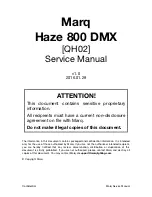
Each 4-port synchronous interface card has an aggregate
throughput of 306 Kbit/s to 460 Kbit/s with compression
running.
The Router 650 is designed such that each interface card has its own
processor, so all compression processing is done on the interface
card. There were no negative effects on performance when four 64
Kbit/s links per card were run with compression; in fact, even fully
loaded (with bi-directional file transfers), each link maintained a
throughput of 96 Kbit/s, a 50% increase in bandwidth utilization
when compared to sending the same data over the same links
without compression running. See the discussion on aggregate
throughput, below, for more details.
Aggregate Throughput
Generally speaking, the CPU is shared among the four WAN links on the
card. Therefore, for each interface card, adding all the link speeds will
determine that card’s aggregate throughput.
If the total of all link speeds for a given card is less than 306 Kbit/s per 4-port
synchronous card, then all links will be able to handle maximum load with
no problems. This 306 Kbit/s value is very conservative, as it takes into
consideration the maximum amount of traffic going in both directions on the
link simultaneously.
If the total of all link speeds for the card is between 306 Kbit/s and 460
Kbit/s, then the compression algorithm may not keep up with all links
running at maximum capacity. That is, throughput may not increase as link
speed increases. However, normal day-to-day activities (non-peak loads)
should still perform with no problems.
If the total of all link speeds for the card is greater than 460 Kbit/s, then turn
off compression or reduce the link speed on one or more links until the total
is less than 460 Kbit/s.
For example, using four 64 Kbit/s links would yield a total of 256 Kbit/s.
Since the total is less than 306 Kbit/s, there will be no performance limita-
tion. Similarly, one 256 Kbit/s link per card can run with no limitations.
Data Compression for WAN Links
Design Guidelines
2-138
Summary of Contents for 600 Series
Page 1: ...Hewlett Packard Series 200 400 and 600 Routers HP Routing Services and Applications ...
Page 4: ......
Page 5: ...1 Product Notes ...
Page 6: ...Features of HP Routers Architecture and Technology Branch Office Routing Product Notes 1 2 ...
Page 38: ...Architecture and Technology Software Control Path Architecture 1 34 ...
Page 52: ...Branch Office Routing Future Directions 1 48 ...
Page 53: ...2 Routing Services Notes ...
Page 106: ...Bridging Service Traffic Prioritization 2 54 ...
Page 158: ...Novell IPX Routing Service NetBIOS Protocol Support 2 106 ...
Page 194: ...Data Compression for WAN Links Conclusion 2 142 ...
Page 195: ...3 Application Notes and Case Studies ...
Page 224: ...Improving Network Availability Application Recovery 3 30 ...
Page 234: ...ISDN Wide Area Network Design Dry Creek Joint Elem School District Performance 3 40 ...
Page 316: ......
















































